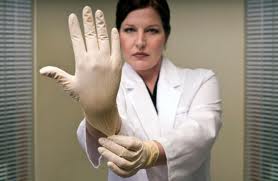When Should Health Professionals Refer a Patient to Women’s (and Men’s) Physical Therapy?
Thanks to the great job by the LA Times there is renewed interest and increased visibility around the too-often taboo subjects of peeing, pooping and sex. It’s not necessary to suffer these problems in silence or shame, and there are qualified professionals who can help you find the care, support and courage you need. You can recover your health!
What is this special kind of Physical Therapist?
Physical Therapists who specialize in pelvic health are a key component of an interdisciplinary team. We do a musculoskeletal screen of the spine, pelvis, legs, check on breathing and coordination, PLUS we know how (and when) to do an internal pelvic examination to determine how the internal pelvic muscles are doing. It’s not all about Kegel’s - a healthy muscle can contract AND relax. If the problem is an unrecognized/unaware pelvic contraction then there is a need to learn to lengthen/relax and recover the nuance and bounce of the pelvic muscles. Specialized Pelvic Health therapists also understand how complex pain is, and respect that pain in the pelvic area comes with additional complexity. We can do our evaluations and treatments with pain science underpinning our treatments and help to calm a sensitive nervous system. (No Pain and Plenty of Gain).
How would you know WHEN to refer a person to a Women’s (and Men’s) Physical Therapist?
Part of a routine examination gives the clues:
- Urinary Incontinence (Stress or Urgency/Frequency)
- Pain in the genitals
- Pain with intercourse
- Unresolved Hip/SI pain in the absence of pathology
- Fecal Incontinence
- Back/hip pain in pregnancy
- Heaviness or pressure in the perineum (Pelvic Organ Prolapse)
Any of these problems should be evaluated by a specialized physician, typically a Urogynecologist, Urologist or Gynecologist. Once pathology is ruled out, the next step should be a Physical Therapist that specializes in pelvic health. That’s a bold statement – read on!
Sex should never hurt – there are a variety of reasons why it might, and pain neuroscience education combined with careful graded exposure to tissue stretch and fitness, manual therapy and consultation with a qualified sex therapist if needed will help restore not only tolerance to sex, but the enjoyment and glorious benefits associated with orgasm.
It is not normal to leak urine, although it is common and 1 in 3 women report this problem. Stress incontinence and Urgency/Frequency respond to education and training. Physical therapists can design a program to regain control and restore function. Some more information is here and here.
It is not normal to leak stool either, or to be constipated. Bowel health can be a bit complicated and we typically work closely with a physician to ensure bowel health and interdisciplinary treatments. We’ve addressed this previously here.
Pain in the perineum is to be taken seriously and treated (labia, testicles, penis, vaginal or rectal pain). After a good evaluation by an MD to rule out pathology, you should come to see a pelvic health therapist. We know that pain is 100% a protective response that may not have as much to do with the tissue health as we think. There’s a patient education book underway that will address pelvic pain from a biosphyscosocial perspective – which is what the pain science literature is pointing to as the most effective way to treat pain. In the mean time, we love this video.
Low back, hip or SI pain that isn’t responding to treatment may involve a coordination issue that includes the internal pelvic muscles. Normal movement is a combination of multiple systems and sensory awareness, the pelvic muscles are important in this symphony of motion. If things aren’t getting better, consider an internal pelvic evaluation to see if the pelvic musculature is coordinated, supple and able to both contract AND relax.
There may be a strong sense of hesitation to talk about these things – by the health professional and by the person experiencing it… but since we can make a difference in a persons most basic necessity of life – don’t hesitate to refer!
Where would you find a qualified therapist?
The American Physical Therapy Association and the Section on Women’s Health have locators to find qualified therapists in your area. There are growing lists in Canada, the UK and Australia as well. If there isn’t a qualified provider in your area it may be worth a phone call or consultation with the closest you can find. We can help, often we will see measurable change in 2 or 3 weeks.






